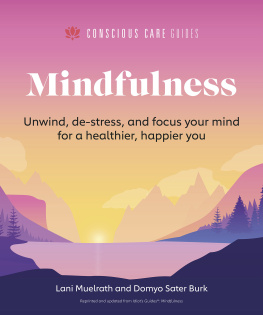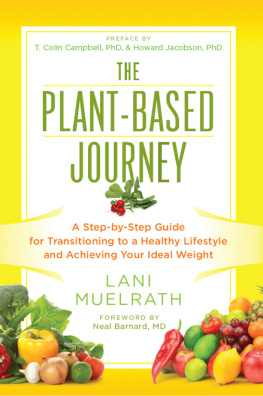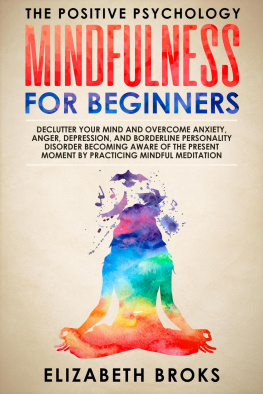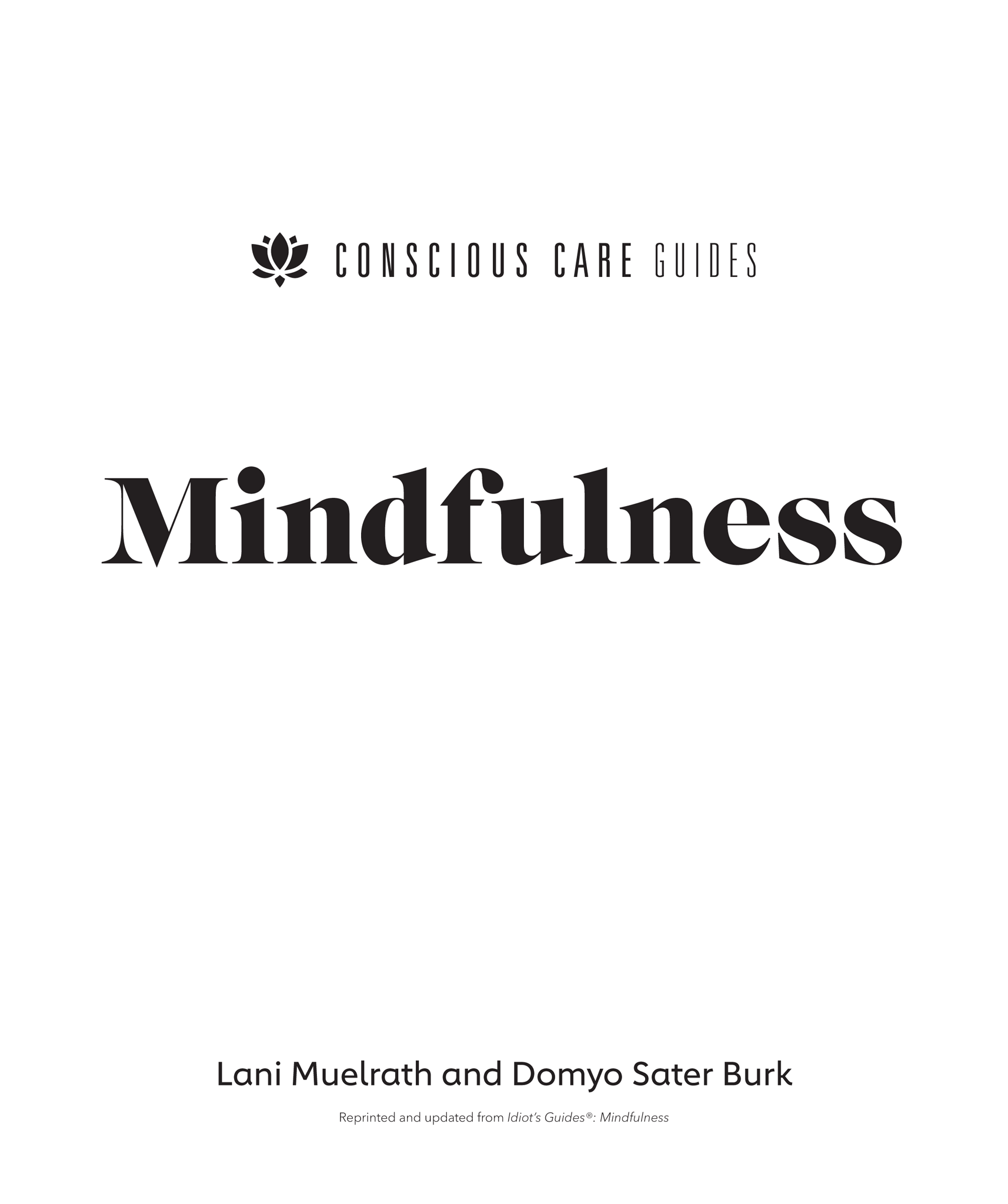CONTENTS
Landmarks
Contents
How to use this eBook
Preferred application settings
For the best reading experience, the following application settings are recommended:
- Orientation: Portrait
- Color theme: White background
- Scrolling view: [OFF]
- Text alignment: Auto-justification [OFF](if the eBook reader has this feature)
- Auto-hyphenation: [OFF](if the eBook reader has this feature)
- Font style: Publisher default setting [ON](if the eBook reader has this feature)
Introduction
Quite likely, before you even opened the pages of this book, you have heard about the benefits of mindfulness. Perhaps you have even experienced them for yourself. As evidenced by over 7,000 research studies that have been conducted over the past twenty years regarding its practice, mindfulness has been shown as highly beneficial to all kinds of people, for all kinds of reasons. Mindfulness is proven to increase rates of healing, decrease reported pain levels, improve cardiovascular health, and boost immune response. There is evidence that mindfulness can decrease anxiety and stress, provide a way to cope with depression, and increase levels of satisfaction with relationships and work situations. It has helped people improve problematic behaviors, such as smoking addiction and binge eating. And it is effective with populations that other methods have not reliably been able to benefit, including at-risk youth, prison inmates, and people suffering from certain kinds of intense and complicated mental illness.
Yet in addition to this impressive list, theres a bigger story to tell about the unique ability of mindfulness practices to bring assistance in meeting the challenges of being human. As valuable as research is, one of the limitations of the scientific approach to analyzing any phenomenon is the penchant we seem to have for commodifying the results. By narrowing the lens to see the lab results of better health, better bodies, and more workplace productivity from mindfulness practice, we narrow our view of the greater picture that mindfulness practice can open to us: a life lived in harmony with our deepest values. Its kind of like walking into a room with a window through which you can see part of a tree, yet when you step close to the window, you can see the tree in its entirety. I invite you to look at what you may have heard about or know about mindfulness with this perspective in mind. It can open you to more than you ever thought possible about the potential of mindfulness practice helping you live a more satisfying life. It is my intention in this book to underscore and emphasize this broader perspective and experience that can be yours through mindful living in all its aspects.
Everyone wants happiness and peace of mind. In the West, the default method for getting them has been through a model of acquisition, such as the procurement of things (e.g., a better house, a better car, a better job, a better companion, or a better body) and the attainment of experiences the dream vacation, some measure of fame, and elevated social standing. Mindfulness comes from an ancient tradition that shows us that although these things can certainly bring us some measure of joy and pleasure, they are flawed by their inherent dependencies on outer circumstances.
The surge of public awareness and practice of mindfulness in the last few years has, in many ways, been viewed through the same lens of acquisitionas if happiness and peace of mind are something we can go out and get. Yet according to mindfulness tradition, making our happiness dependent on how often we get what we want and on how often we rid our lives of what we dont want leaves us painfully vulnerable to the inevitable winds of change.
The ancient Buddhist tradition from which mindfulness practice comes teaches us that there is a better, more reliable way. It teaches us that happiness and peace of mind are already within us, within our true nature, and they need only to be realized. We can do this by getting under the surface of our acquiring habit of mind to the underlying state of equanimity and joy that have gotten crushed under the burden of our busy minds, our busy lives, and our constant quest for moremore things, more notoriety, more epic experiences. Mindfulness training teaches us that we can still enjoy all that life has to offer but from the broader perspective that mindfulness practice opens to us. Like a well-running car, we can idle in a more harmonious, functional state that makes it possible to navigate lifes ups and downs with greater ease. Thus, we are not so dependent on getting more of what we want and less of what we dont want to make us happy.
Mindfulness isnt a special technique you add to your life; its about learning to use your body and mind more effectively. Its a simple process of cultivating receptive awareness of your present experience, no matter what it is. To do this, you must learn to let go of your stimulus-independent thinking, such as ruminating on the past, planning, analyzing, evaluating, judging, fantasizing, and daydreaming.
Whats remarkable is that such a simple practice makes such a big difference. Science has already begun to explain why this is the case. Essentially, it seems that human intelligence, while very advantageous in many ways, causes problems. You come to rely too heavily on the abstract world that only exists in your mind. You spend more time thinking about things that arent actually happening than you do paying attention to your present experience. You perceive things through the filter of your ideas and judgments, and fail to notice cause-and-effect relationships because youre so preoccupied with your thoughts. You believe your feelings, concepts, judgments, and emotions reflect reality; therefore, youre compelled to defend or act on them.
Simply and repeatedly turning your attention back to the present moment counteracts the effects of spending so much time stuck in your head. It isnt easy to make mindfulness a stronger habit than dwelling on stimulus-independent thinking, but each time you become aware of your actual experience, here and now, it helps you gain perspective on your life. For a moment, you notice whats in your own mind versus whats actually going on. This moment opens many possibilities for different ways of thinking and behaving. Through conscious care, you revolutionize your daily experience and your relationship to others. And you start to gain mastery over your habits of thinking.
The great thing about mindfulness is that its very simple to do, and anyone can do it. The necessary tools are accessible to anyone, they cost nothing, and they have no negative side effects! It might sound too good to be true, so Ill let you know what the catch is: Mindfulness takes effort. This book will tell you what that effort entails so you can make mindfulness a part of your life, no matter what kind of life you lead.
What You Will Learn in This Book
This book is divided into five parts, which will walk you through the various aspects of mindfulness and how to work on them.
, What You Need to Know About Mindfulness, explains what mindfulness is and why its such a big deal. I cover some of the benefits of mindfulness practice and our current understanding of how mindfulness works. Of particular interest is why cultivating awareness of the present has such a profound effect. In this part, I also introduce mindfulness as a practice, including its 3 aspects (aspiration, awareness, and attitude) and 12 principles you can use to guide you efforts.











